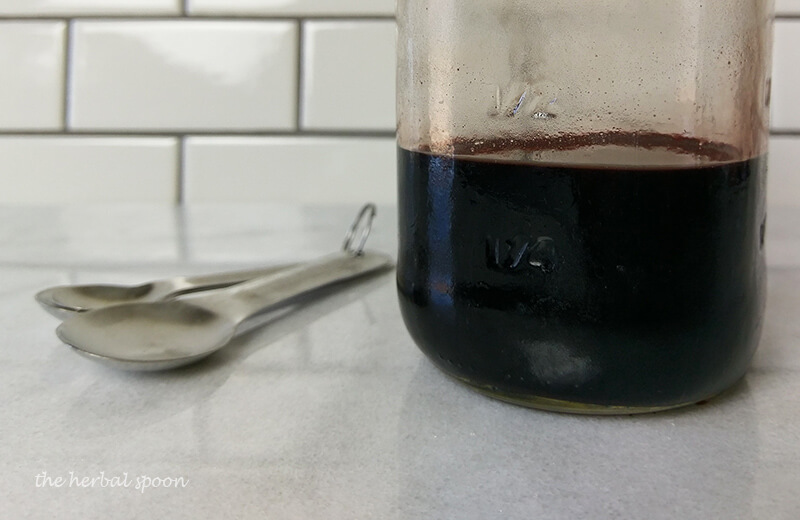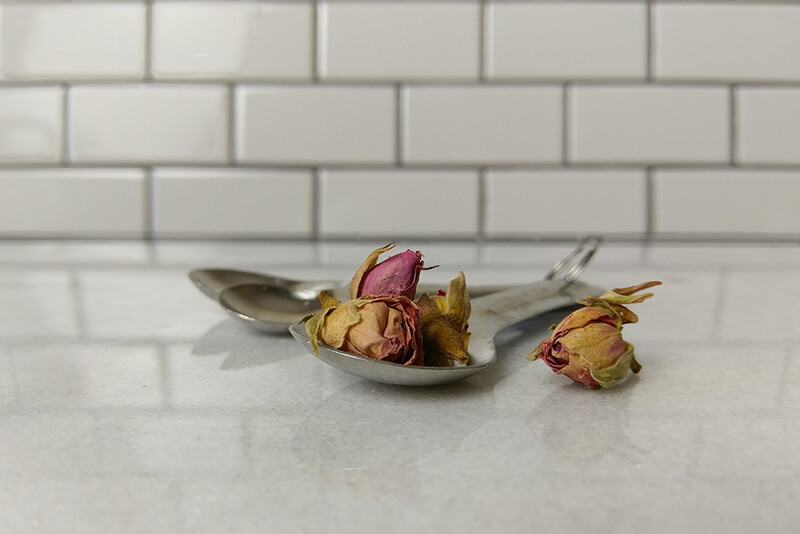
“I want to make an herbal remedy that doesn’t work” said no one ever. There are several reasons why natural remedies don’t work sometimes, and improper dosing is a common one. I want natural remedies that are both safe and effective for my family, and correct dosage is vital for that. Thankfully it’s not as complicated as it seems and gets easier with practice!
In this article I’ll cover:
- The different approaches to herbal dosing and which ones are best
- How to dose herbal remedies for children and babies
- How to figure dosing for different herbal preparations, like teas, syrups, and powders.
- How to get the best results from your herbal preparations.
Why Correct Dosing is Important
I was confused by dosing herbs in the past, especially when it came to children and babies. Googling different herbal remedies also wasn’t helpful, since the recipes usually give arbitrary amounts. I want to know I use enough of the herb to be effective. I also want assurance I didn’t use too much and waste my resources, or worse, harm myself and family.
Most herbs have a much wider safety window than pharmaceutical drugs. Even something that seems as harmless as Tylenol can cause liver damage at a normal dose While herbs are generally much safer, it’s still important to me to balance safety and efficacy.
Different Approaches to Dose Natural Remedies
There are several different approaches to dosing herbs and various opinions on what’s best. Unlike drugs, herbs work synergistically with the individual to produce the best results. We know through scientific research and decades of practice how much to use of different herbs. Herbalists often tweak the dose to better fit someone’s exact needs, however different mentalities determine the start point.
Folk or Traditional Method to Dose Herbal Remedies
This is the most simple way to dose herbal remedies and also the easiest to get wrong. It involves instructions like, “throw a handful of herbs into a jar and cover with alcohol,” or “squirt a few dropperfuls into water and drink.” It often doesn’t specify the strength of the preparation and isn’t exact. The folk method is fine for something like a cup of chamomile tea in the evening to wind down. This method may not work so well to address a serious illness in the most effective way.
Let Your Body Determine the Dosage
This method relies on our bodies intuition to decide how much or how little of an herb we need. Like the folk method, it’s not exact and may not be appropriate in every situation. For example, lobelia internally can help with seizures, but only a tiny amount is needed to be effective. Too much lobelia can cause vomiting, paralysis, coma, or death (Tilgner, 2009).
Intuition based dosing isn’t always the best option for little ones either. Hand them a yummy herbal syrup and they may drink way more than necessary. Or if it’s a preparation that doesn’t taste appealing, they may not want as much as they need for it to work effectively.
General Herb Dosing Guidelines
Generalized guidelines are another way herbs are commonly dosed. An example would be to take 1 tablespoon of herbal syrup for all adults and 1 teaspoon for all children. This doesn’t take into account the strength of the preparation or the amount needed for someone’s age/weight. A 2 year old who takes 1 tsp of herbal syrup will get a lot more for their bodyweight than a 13 year old.
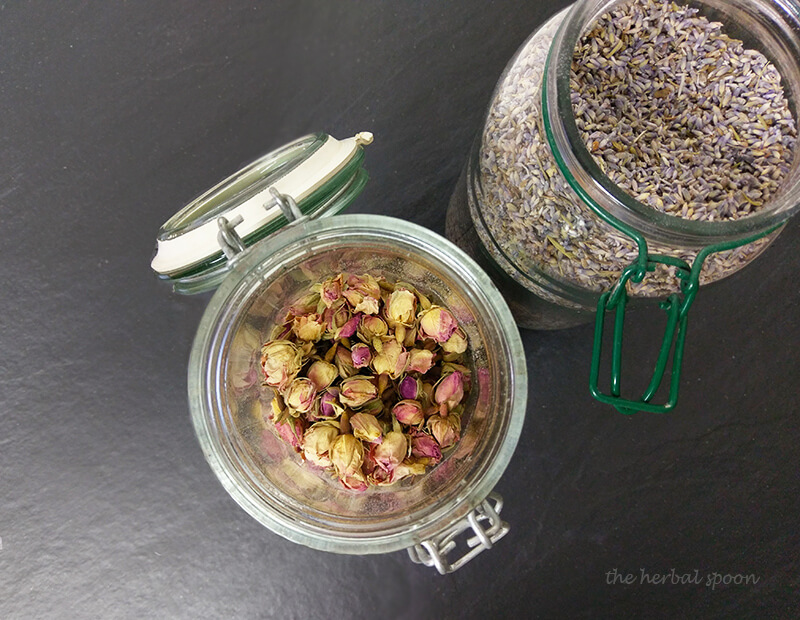
The Best Way to Dose Herbal Remedies
Each herb has its own safety and dosage guidelines. To best dose natural remedies we also have to consider the issue treated, the person’s health history, and their age, among other factors. My favorite way to know the correct dosage for each herb is to consult a materia medica reference. A good materia medica covers:
- Contraindications (who shouldn’t use the herb)
- Which health issues to use the herb for
- Which parts of the plant are used for what issue (leaves, flowers, roots, etc.)
- How much of the herb to use depends on the preparation (tincture, tea, etc.)
- Which preparation is best for which health issue
Below are my favorite materia medica reference books. I haven’t found many credible online sources except for the Herbal Academy’s herbarium. It’s written by experienced herbalists and contains plant monographs and informational articles like how to wildcraft herbs and how to treat ADHD. There is an annual fee, but I’ve found it well worth it to have credible information wherever I am (yes, even on my phone).
- Earthwise Herbal volume 1 and volume 2 by Mathew Wood
- Herbal Medicine from the Heart of the Earth by Sharol Tilgner N.D.
- The Herbarium by the Herbal Academy
Interpret Herbal Dosage
Even though I have my favorite reference materials, they don’t spell out how to dose herbal remedies in every situation. It’s more of a start point. Here are some other things to consider for the best way to dose herbal remedies.
Acute Versus Chronic Conditions
Acute conditions come and go quickly, like the flu or chicken pox. When dosing for an acute condition it’s best to use larger, more frequent dosing. A good rule of thumb is every 2-3 hours for the first 2-3 days. Once symptoms are gone, I continue to give a dose 3-4 times a day until 7-10 days have passed since the symptoms first started.
Chronic conditions last for months or years, like mono, Lyme disease, and fibromyalgia . Instead of large doses, chronic conditions call for low doses about 1 to 3 times a day, depending on the exact need. Chronic conditions are also multi-faceted. Some symptoms may improve or go away completely, while new ones pop up. Tweak the herbs and dose used for a chronic condition. Eventually use the herbs as a maintenance supplement, or discontinue them altogether.
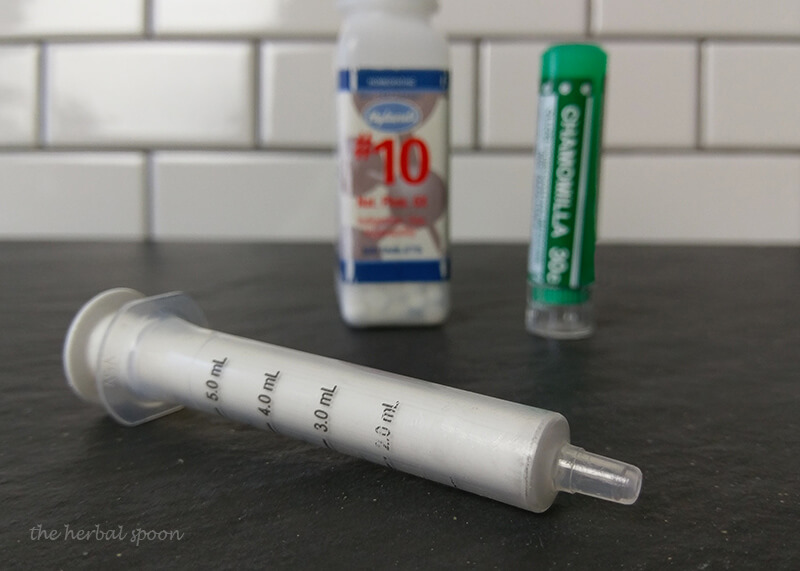
How to Determine Dosage for Children
Dosages for herbs and supplements are given for an average 150 pound adult and can be adjusted from there. If the herb is safe for children, there are several different dosing rules to help determine the right dosage for children.
Clarks Dosing Rule
Clark’s rule is based on the child’s weight, so it’s especially helpful for children who are large or small for their age. It’s the one I rely on most often for my kids.
Child’s weight divided by 150, then multiply that number by the adult dose.
Example: The adult dose is 1 Tablespoon and the child weighs 70 pounds.
- 70/150 = approximately .5
- .5 X 1 Tablespoon = ½ tablespoon
Young’s Dosing Rule
This dosing rule uses the child’s age in months to determine dosage. It’s considered more accurate for children 2 and older. Add 12 to the child’s age, then divide their age by that number. Multiply the results by the adult dose.
Example: The adult dose is 20 drops of tincture and the child is 3 years old.
- 3 + 12 = 15
- 3 divided by 15 = .2
- 20 drops x .2 = 4 drops
Freid’s Dosing Rule
Freid’s rule is commonly used for infants and children 2 or younger. Child’s age in months divided by 150, then that number is multiplied by the adult dose.
Example: The adult dose is 1 cup (16 tablespoons) of tea and the child is 8 months old.
- 8 divided by 150 = .05
- .05 x 16 tablespoons = .85 tablespoons
How to Dose Herbal Remedies for Infants
For a young baby, especially one younger than 6 months, the best way to give herbal remedies is through mom’s breastmilk. Mom can take a full adult dose and the beneficial properties are passed through the milk to baby when they nurse. If your baby isn’t currently breastfeeding, then you can use Freid’s dosing rule. I convert the adult dose to milliliters (ml) first which makes it easy to give to baby in a syringe.
- ½ tsp = 2.5 ml
- 1 tsp = 5 ml
- 1 TBSP = 15 ml
Which Herbs are Safe For Children and Infants?
There are various opinions on this, but I prefer to listen to experienced clinical herbalists on this one. Conventional drugs given to children and infants, like Tylenol, are harmful for little ones. Herbs are generally a much safer option when something is needed. Gentle, kid friendly herbs are the best first option, yet even strong herbs can be used when dosed properly.
“My experience has been that almost any herb that is safe for an adult is safe for a child as long as the size and weight of the child are accounted for and the dosage is adjusted accordingly. These herbs should be used in small amounts for short periods of time only , and in conjunction or formulated with milder herbs” – Rosemary Gladstar
How to Dose an Herbal Syrup
Syrups are one of the yummiest way to take herbs and are a great option for little ones. It’s important to know the strength of the preparation to determine the best dosage. Pre-made herbal syrups are much easier to figure out. For example, if you use elderberry syrup for the flu (which is an acute condition), and the bottle lists the adult dose at 1 Tablespoon, then you could take 1 Tablespoon every 2-3 hours until symptoms subside. Then do a maintenance dose 3-4 times a day for a few more days.
For a homemade herbal syrup, we have to determine the strength first.
- Let’s say the dosage of the herb used is 1 tsp, twice a day. You need enough herbal syrup to last a week, so you use 14 teaspoons of herb to make the syrup.
- When you’re finished with the recipe you end up with 2 cups total of herbal syrup.
- We know there’s 14 doses total in there, so we divide the 2 cups by 14. I like to convert cups to Tablespoons or even teaspoons first to make it easier.
- 2 cups (32 Tablespoons) syrup divided by 14 doses = 2.3 Tablespoons (or 2 TBSP and 1 tsp) for an adult dose. If dosing for a child, then use one of the dosing rules above to convert the adult dose into a child’s dose.
How to Dose Herbal Tea and Decoctions
This one is a little easier to figure than an herbal syrup. Typically 1 tsp of herb is steeped in 1 cup of hot water. More herb is used if its larger or “fluffier,” like mullein and chamomile flowers, generally 2-3 teaspoons. Tough plant material, like bark and roots, are usually decocted (or simmered) for 10-20 minutes to best extract the beneficial constituents of the plant.
There are exceptions to this (like marshmallow root which needs steeped in cool water for hours), so it’s best to refer to a materia medica for the herb used.
Dosing Tea for Children
Instead of trying to dose down the herb for a child (what would .005 teaspoons be??), I determine dosage based on the amount of tea I end up with. For example, if I wanted to make ginger tea to soothe an upset tummy, I’d steep 1 tsp of ginger root in 1 cup (16 TBSP) of water, which is the adult dose. I’d then use one of the dosing rules above to determine how much of those 16 Tablespoons of tea to give my little one.
For mild herbal teas like peppermint, chamomile, and lavender I usually use the folk method of dosing to keep it simple. I’ll throw a good size pinch of herb into 1/2 cup hot water and let my son sip as he desires.
How to Dose Herbal Powders
Herbs can be ground into a powder and mixed with things. This is helpful for those who don’t want to drink 4 cups of tea a day. Not all herbs are best taken as powders though, so be sure you use the best preparation for the condition at hand.
Here are some different ways to take an herbal powder.
- Mix into applesauce or yogurt.
- Mix into a healthy fruit smoothie.
- Put into capsules and swallow. – Bitters (like gentian and dandelion) jumpstart digestion when the tongue tastes them. If they’re put into a capsule, the effect won’t be the same.
- Mix with honey to make an herbal electuary. This option is good for little ones who can’t swallow pills yet, and the herb tastes too strong to disguise in other foods. Honey isn’t safe for children under 1, but food-grade glycerine or agave are safe options.
- Mix with honey to make a thick paste and roll into pastilles (like cough drops).
External Uses for Herbal Powders
I don’t like to use powdered herbs to make tea or salves with because it’s hard to strain the herb out. Powdered herbs are useful for more than taking internally though. Some herbs can be made into a paste with water or oil and applied topically as an herbal plaster or poultice.
I’ve used Oregon grape root powder mixed with coconut oil on psoriasis plaques. And powdered yarrow sprinkled on a wound will help stop bleeding. In instances like these I don’t carefully measure the herb out. I use enough herb and liquid to get the right consistency, then apply liberally.
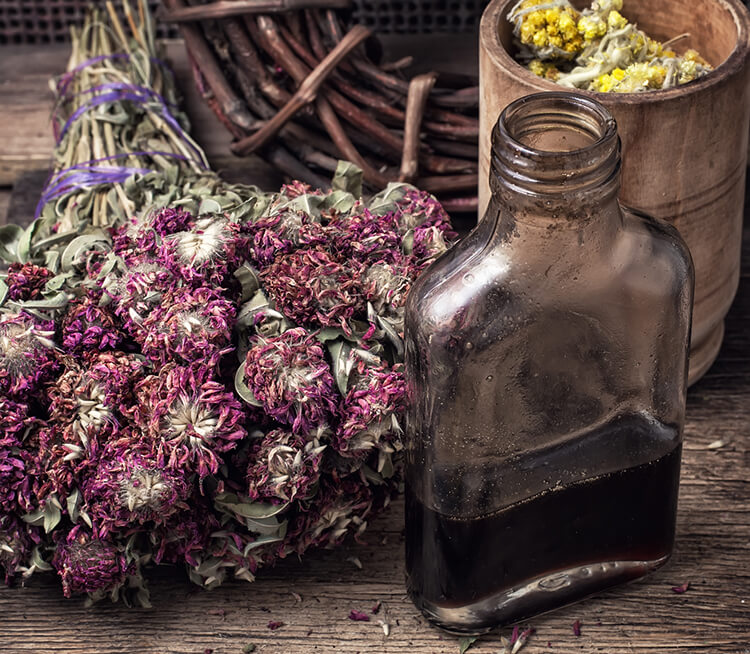
How to Dose Tinctures
Tinctures are highly concentrated and are typically measured in drops or dropperfuls. These can be mixed with other ingredients to temper the taste, like applesauce or yogurt, or taken in water. In certain instances, tinctures can be used topically on the skin, though the alcohol can be irritating. Not all tinctures are the same strength and this also effects how much needs used.
When I make a homemade tincture it’s important to measure out both the herb and liquid used, or determining the right dosage will be impossible. It doesn’t help to say “take 10 drops of the tincture” if you have no idea how much herb is in the tincture!
This book gives thorough and easy to understand instructions to make tinctures. It also covers how much of each herb to use, and different herbal tincture recipes to address specific health complaints. This article from herbalist Juliette Carr is also a good resource for how to make tinctures.
Tailor the Dose to the Person
Herbs don’t work like drugs, they work synergistically with the individual to bring balance and wellness in the body. Someone can have a “hot” or “cold” constitution, or be “wet” or “dry.” I used to think this was nonsense, but the more I’ve learned about herbs the more I’ve realized how different we all are. Choosing the right herb for someone is as important as determining dosage. Healing with the Herbs of Life by Lesley Tierra has helped immensely with my understanding of how to work with different constitutions.
If you find an herb doesn’t work for you, there are several options.
- Increase the dosage (be careful with herbs that have a lower toxicity threshold, like lobelia)
- Use a different herb. If ginger doesn’t help your nausea, maybe peppermint will.
- Add supporting herbs to the preparation. For example, if I make a digestive blend with bitters the bitters help stimulate and enhance digestion. However bitter herbs can cool and dry which interferes with digestion long term. I could add warming herbs (like ginger) to create a more balanced formula (McDonald, n.d.).
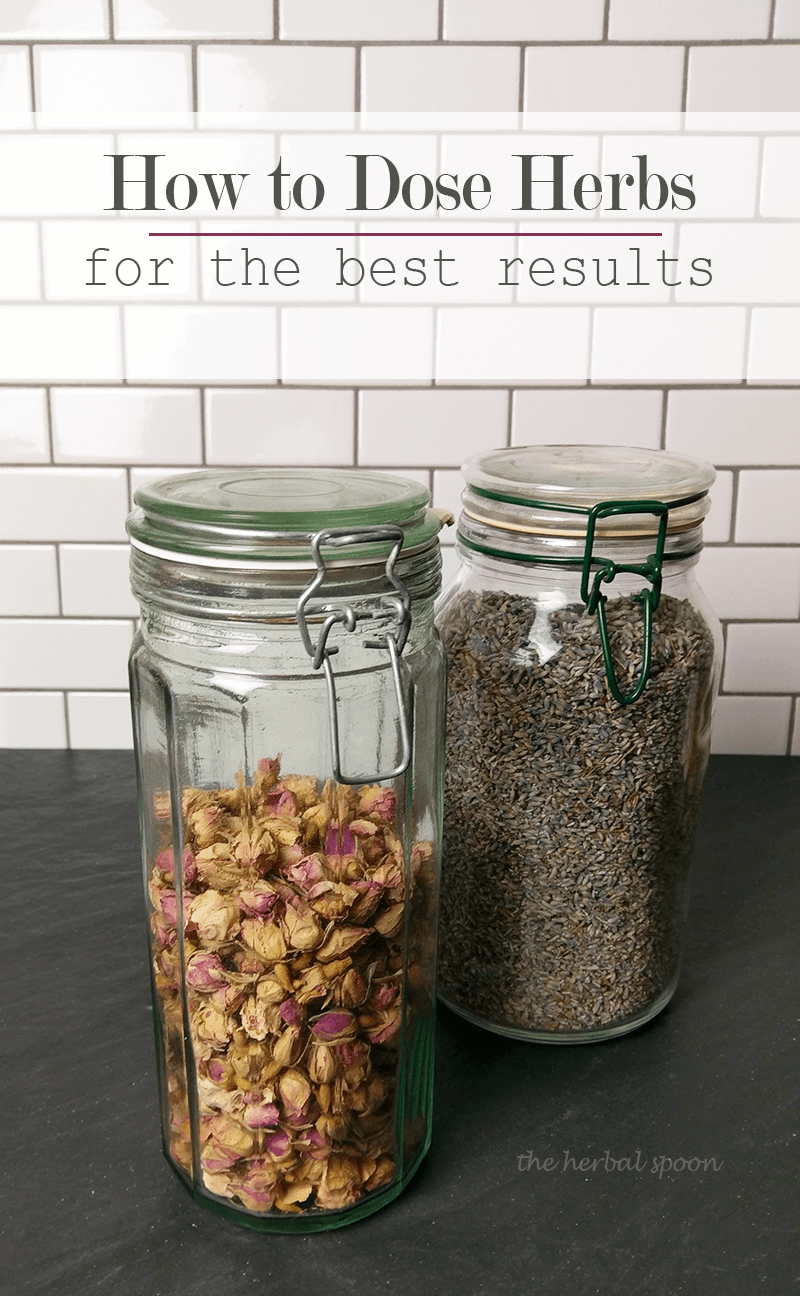
References:
- McDonald, J. (n.d.). Blessed Bitters, Herbcraft. Retrieved from http://herbcraft.org/bitters.pdf
- Tilgner, S. (2009). Herbal Medicine from the Heart of the Earth. Pleasant Hill, OR: Malloy Lithographing Inc.
- Watkins, PB., Kaplowitz, N., Slattery, JT., et al. (2006). Aminotransferase Elevations in Healthy Adults Receiving 4 Grams of Acetaminophen Daily: A Randomized Controlled Trial. JAMA. 296(1), 87–93. doi:10.1001/jama.296.1.87
